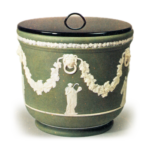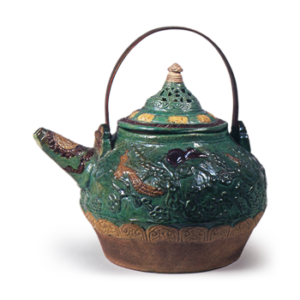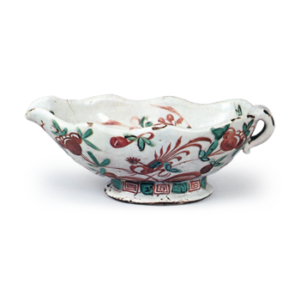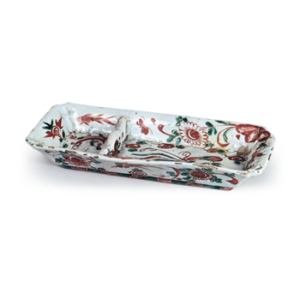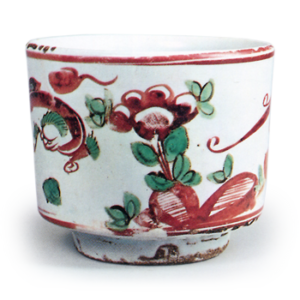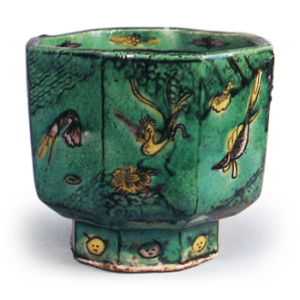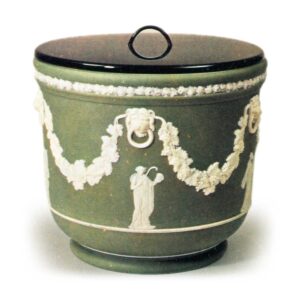
English pottery manufacturer, born July 1730.
His family was a middle-class Staffordshire potter. At the age of 10, he contracted smallpox and injured his right knee, after which he gave up pottery making and began to observe and improve the pottery industry in general at the pottery owned by his brother Thomas. At that time, the population of England was increasing due to the Industrial Revolution, and the demand for daily necessities was growing rapidly. This demand required the pottery industry to shift from individual workshop production to factory production. Wedgwood’s attempt to take the initiative in converting from a workshop to a factory was not well received by his brother, and in 1758 he began running his own pottery business. He began by introducing the division of labor, replacing the traditional individual, integrated work, and improved raw material composition and the potter’s wheel to allow for mass production. He also worked to open new canals to reduce transportation losses. Next, he came into contact with several chemists, including the famous discoverer of oxygen. Among them was the chemist Priestley, famous for his discovery of oxygen. He took the new discoveries and data from these scientists and incorporated them into his pottery business, and he also came to know Bentley, a leading entrepreneur in Liverpool. Thus, he was constantly striving to improve his materials and processes, fully incorporating the new scientific findings of the time. The division of labor, the rational layout of the factory, and the improvement of working conditions were promoted. The famous Etruscan factory was thus built. In 1768, he received an order from the Russian Empire for a set for the British Empire, which led to a large order from the Russian court. Some of the orders called for different landscape designs on all 952 pieces of pottery, a problem he solved by using dark boxes to capture the landscape. He constantly experimented in his laboratory in Etruria, trying to find scientific solutions to ceramic technology. His experiments produced a material later named jasper. The main ingredient was barium sulfate. Priestley was in constant contact with Wedgwood and kept him informed of the results of his research, and Wedgwood began to publish papers in the journal of the Royal Society, which was founded in 1660 and was the leader in scientific research in England, and played a major role in the development of modern science. His pyrometer, which utilized the phenomenon of clay shrinking with increasing temperature, attracted much attention.
In 1783 he was elected a member. The year before this, Watt’s steam engine was introduced, which was used for grinding silica stone and for the preparation of paints and raw materials. The Etruscan factory was divided into the departments of utilitarian goods, ornaments, and artificial jewelry (jasper), and in 1790 there were about 160 workers engaged in production under a division of labor. In 1772, a catalog was published with a large number of chemical laboratory apparatuses made of highly heat-resistant ceramics. It was the first of its kind in the world.
Chemists ordered a wide variety of laboratory equipment from him, which at the same time served to advance science in England. According to the catalog of the Etruscan factory of 1773, there were 20 different products. By 1787, there were 1032 medals and cameos modeled after ancient ornaments and contemporary art. (2) Relief-type medal decorated plates: to be increased to 300 types. (3) Medals = to be increased to 100 types, with portraits of kings, queens, and historical figures from the past. (4) A set of six medals covering the history of ancient Rome. (5) 40 medals with copies of Roman coins. (6) Four different sizes of Caesar medals. (7) Fifty-two famous kings in medal history. (8)Medals=253 types of papal images. (9)Medals of kings and queens of England and France = 102 types. (10)Medal=Portrait of a contemporary celebrity. (11)Eighty kinds of busts and forty kinds of animal statues. (12)Lamps and candlesticks: marble, rock, and jasper. (13)Tea and coffee set, various tableware: green, black, white, colorful, and two-color jasper. (14)Vases and flowerpots. (15)Terra cotta ancient type decorative vase. (16)Ancient decorative vase in rock style with relief. (17)Painted burning stand/decorative board. (18)Jar and three-footed vase. (19)Inkstand, paint dish, chemical and medical apparatus. (20) Thermometers for high temperatures. The large number of reproductive designs, many of which were based on Greek and Roman sources, is characteristic of Wedgwood, which Gladstone describes as “Wedgwood devoted his life to the important task of combining art and industry. He changed the character of English industry. He revived the spirit of beauty in Greek art. Wedgwood invited outstanding chemists and physicists to open the Institute of Ceramics in 1763, and he remained committed to supporting the art of pottery making with scientific rationality to the very end. Erasmus Darwin, the scientist grandfather of Charles Darwin, famous as the founder of the theory of evolution, was Bentley’s closest friend after his death in 1780, and Darwin was even present at his death in January 1795, at the age of 64. He was the first to turn pottery into an industry and to rationalize its manufacturing techniques by introducing a new science, which was part of the Industrial Revolution in England.

